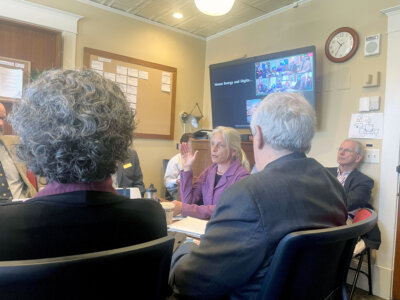Navigating the unemployment system jungle
 Rep. Mike Yantachka
Rep. Mike Yantachka
We are now two months into the societal shutdown caused by the COVID-19 pandemic, but it honestly feels much longer. It seems hard to remember when we nonchalantly shook hands, greeted others with hugs and pats on the back, and could see the faces of folks we encountered in a grocery store. It isn’t bad enough that the economic shutdown has caused unprecedented job losses, but help for many of those who lost jobs or their businesses or had their hours cut back has been tangled up in a jungle of bureaucracy compounded by a 50-year-old antiquated computer system. Because of the success of Vermont’s response to the pandemic in flattening the curve and avoiding an overwhelmed health care system, Governor Scott is gradually “opening the spigot,” as he puts it, to allow some businesses to reopen while maintaining proper hygienic measures.
However, the problems with unemployment assistance continue to plague many Vermonters who are having trouble obtaining the benefits they are owed and who are running out of money. There are several reasons for this situation that amounted to a perfect storm for the Vermont Department of Labor. (It should be noted that most other states are having similar issues.) Take the age of the computer system that handles unemployment claims. It is running on a mainframe computer that was state of the art in the 1970s but is woefully outdated now. It is programmed in a language called COBOL. Programmers familiar with COBOL are long-retired or about to retire. Large-scale updates to the software are not feasible or practical. Two attempts over the last decade to replace the system, both of which were part of a consortium of several states to share the cost of development, have not been successful.
So now we’re stuck with an inadequate system that was working fine when there were 200 to 400 applications per week but can’t handle the 87,000 that were generated en masse since mid-March. The 65 regular VDOL employees who input and process claims were overwhelmed. Calling in to the department became virtually impossible. Since the initial flood of claims, 200 additional personnel were hired, including a call center firm called Maximus. At the same time, the federal CARES Act allowed self-employed persons, who don’t qualify under the regular system because they don’t contribute to the unemployment insurance fund, to sign up for benefits. As a result, a new, unfamiliar Pandemic Unemployment Assistance (PUA) system had to be set up alongside the Unemployment Insurance (UI) system to handle an additional 17,000 claims. To complicate things further, the relaxed rules for claiming unemployment were not reflected in the programming, which caused some applicants to be incorrectly disqualified.
Every one of the 180 members of the Vermont House and Senate has heard from constituents who are rightly frustrated at their inability to navigate the jungle that is currently the state’s unemployment system. After hearing from constituents for weeks, the House created a spreadsheet to allow legislators to record the complaints and situations of their constituents for referral to a special Labor Department team. In addition, 24 legislators have volunteered to assist in connecting claimants on that list to appropriate department employees.
The Labor Department has also taken steps to reverse negative eligibility codes received by many applicants. As of May 10, 54,000 of the 61,000 UI claimants determined to be eligible have been paid, and 8,600 of the 17,000 PUA claimants have received payment. Both the administration and the Legislature know that more must be done, and we are working cooperatively to achieve that for our constituents.
Be well, stay safe—and persist.
I welcome your emails or phone calls at (802) 233-5238. This article and others can be found at my website.
Related Stories
Popular Stories
If you enjoy The Charlotte News, please consider making a donation. Your gift will help us produce more stories like this. The majority of our budget comes from charitable contributions. Your gift helps sustain The Charlotte News, keeping it a free service for everyone in town. Thank you.
Andrew Zehner, Board Chair






